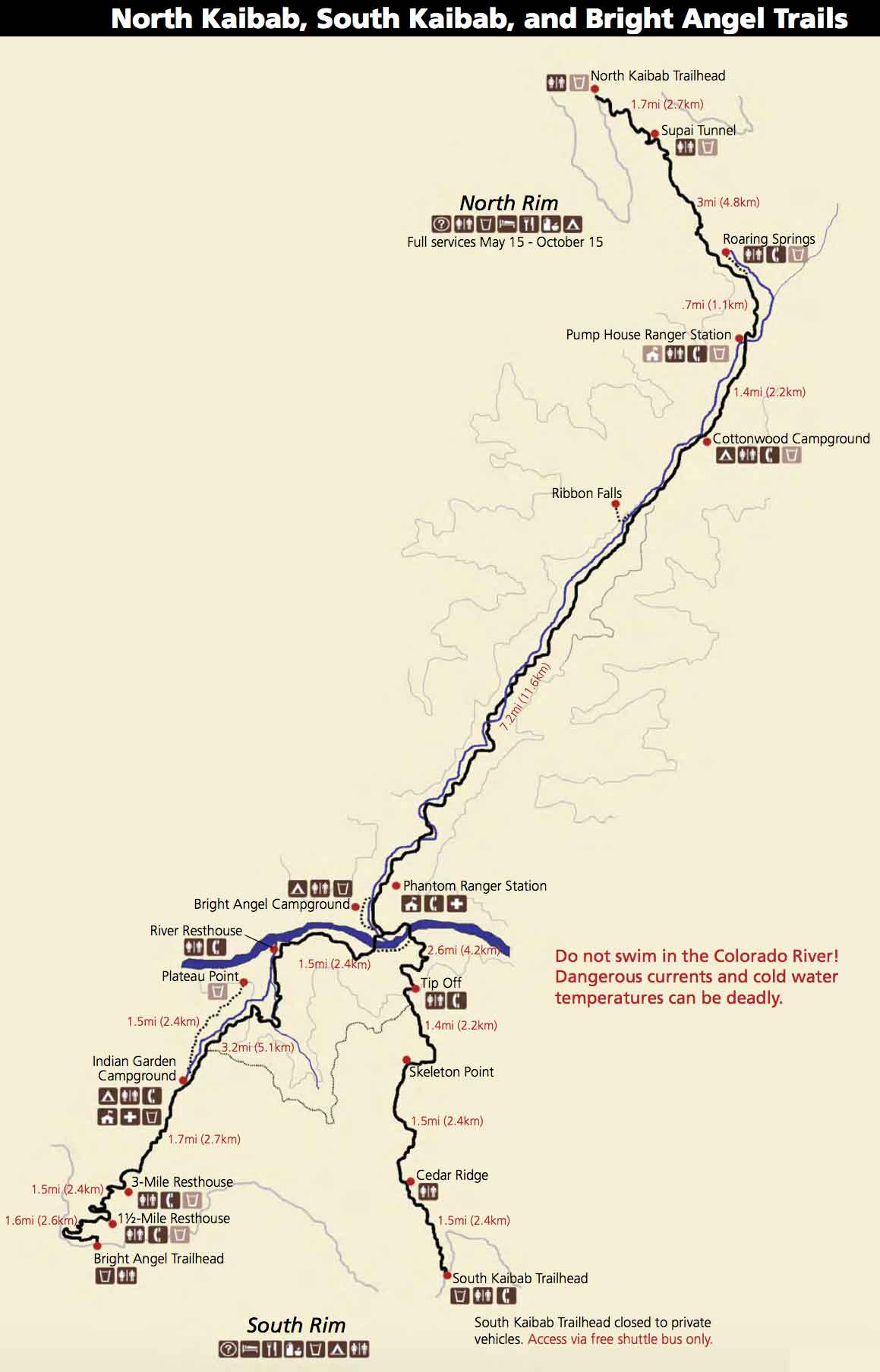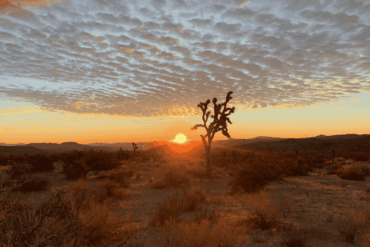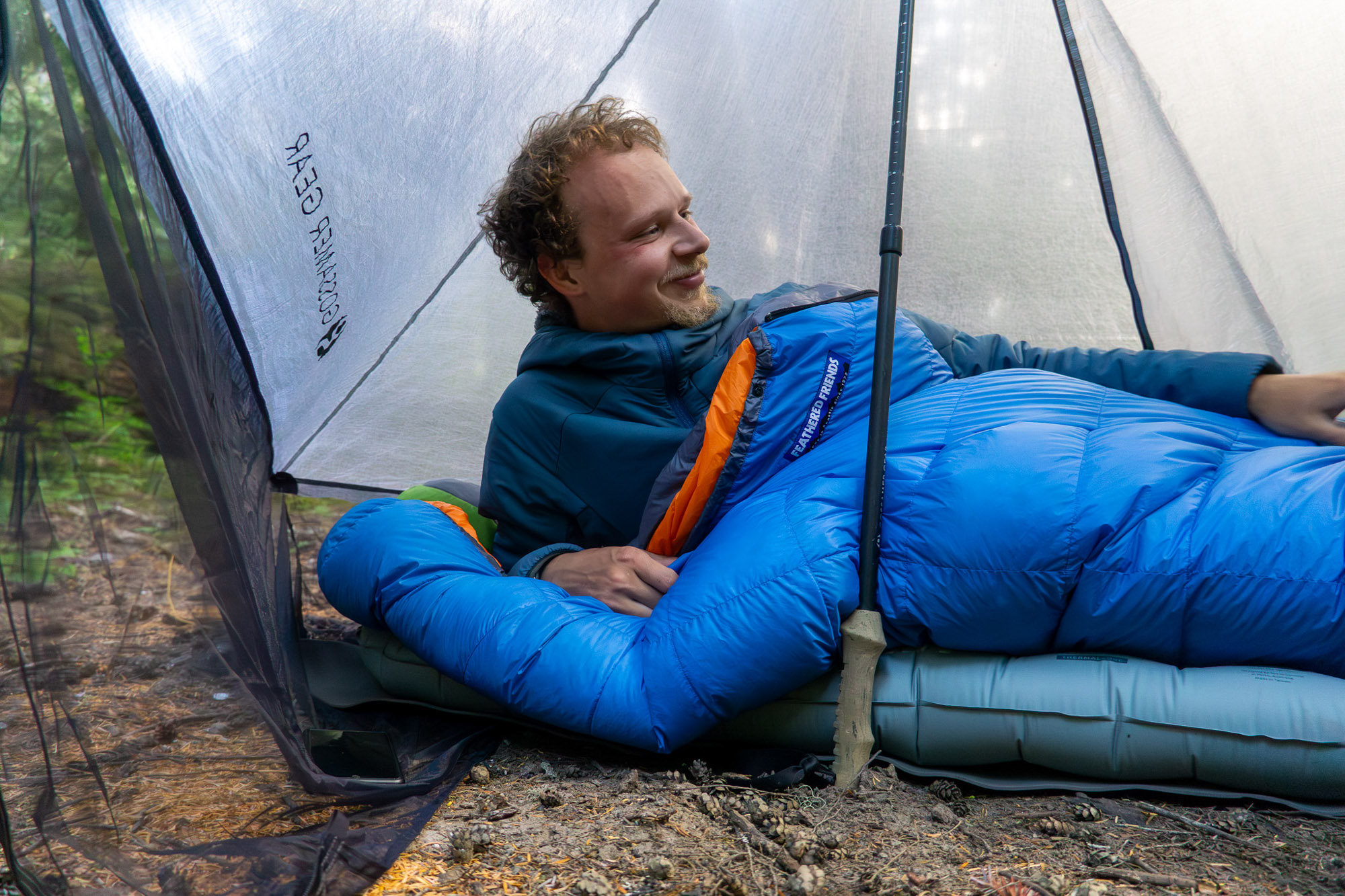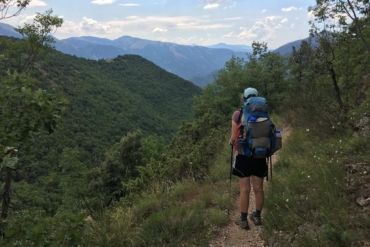[leadin]Experience true solitude at the Grand Canyon. Have it all to yourself, or maybe bring five of your closest buddies. Sound good? Here’s how: Do a Rim-to-Rim-to-Rim backpacking trip, in the winter.[/leadin]

Completing a Grand Canyon Rim-to-Rim-to-Rim backpacking trip is an accomplishment worth a notch in the belt. It is a significant undertaking, but the rewards are remarkable. Stellar views accompany you for each of the 46 miles of trail.
It can be done any time of year. But the best time is in the winter when it’s not absurdly hot. And you’ll have the North Rim of the Grand Canyon all to yourself.
Winter Camping In Grand Canyon
The cold months add an additional element of beauty to an already incredible landscape. The altitude at each rim is deceptively high. The South Rim is at 7,000 feet; the North Rim, over 8,000 feet. At such an elevation, the North Rim is a certifiable winter wonderland November through March.

Roads and lodges at the North Rim close from October 31 – May 15. During this time the only access is by snowmobile or cross-country skis from Jacob Lake, which is 50 miles away, or by hiking 24 miles from the South Rim, which is what my group did last month.
Yurt Option On North Rim
While true winter camping at the North Rim is an option, most people don’t know there is one lodging option: a single yurt. The yurt requires a reservation and can hold up to six people.
The yurt is primitive and there are no beds or amenities. But it has a wood-burning stove and a stash of firewood. You’ll feel like a king once you get there.

In January, I joined a group of photographers to do the round-trip adventure. A recent storm had dropped a significant amount of snow, covering the upper portions of the trail in ice and the white stuff.
The descent was tricky, but as we got below the ice, the temperatures were perfect for hiking. Having hiked the Grand Canyon in the summer, I know it is infinitely more enjoyable with the cool temperatures of winter.
Trip Report: Winter Backpacking Grand Canyon
Things really got interesting at the North Rim. As we ascended the last few miles of trail, the snow continued to get deeper and deeper. The last two miles of trail required significant effort, regularly post-holing into knee-deep snow.
Very few people hike this stretch in winter, so we were essentially breaking trail.

The North Rim was beautiful, cold, and covered with snow. Having access to a yurt, a wood-burning stove, and a pit toilet was quite the luxury.
We had one full day to be at the yurt. While there, we serviced the stove so that it actually worked and allowed us to breathe. We chopped wood, ate a bunch of food, drank beers that one of our crew took great effort to haul in, and we hiked to the rim for a spectacular sunset.
No one had been to the rim since the last snowstorm. Aside from some animal prints, the snow on the canyon made as pristine a view as you could ask for. Being the only group at the North Rim was one of the most remarkable and memorable moments of the trip, something very few people get to enjoy.

Oh, and the rest of the trip was pretty damn good, too. Here’s how you can to do it:
Grand Canyon Rim-to-Rim-to-Rim: Winter Trip
Get A Permit: Contact the Backcountry Permit Office (928-638-7875,
www.nps.gov) about reserving a space at the North Rim yurt and at the campgrounds within the park. Each of the campgrounds requires a permit. Phantom Ranch is a popular destination year-round and spots fill up fast, so book in advance. If no Phantom Ranch permits are available, Cottonwood Campground (seven miles away) likely will have availability.
Plan Your Trip: If you’re a regular human, unlike ultrarunner Rob Krar, and require more than six hours to complete the Rim-to-Rim-to-Rim, give yourself multiple days in an itinerary. Five days allow for a rest day along the way and will afford you an opportunity to really enjoy yourself. The miles are strenuous, especially when there is snow and ice on the trail (there always is during the winter).

Prepare For Winter: Because of the limited access, very few people visit the North Rim in the winter. You’ve got to be committed to getting there. The last few miles of trail at the North Rim are often covered with several feet of snow.
Gear Up: Hikers should be prepared for potentially deep snow. While snowshoes would be helpful at the North Rim, carrying them for 40+ miles might not be worth it. Instead, Slow, strenuous post-holing at the North Rim is likely. Yak Traks or micro spikes are extremely helpful and are essentially a requirement for the icy sections.
Day By Day: Trip Itinerary

Day 1) Descend the South Kiabab Trail (it’s steeper, but fewer miles than the South Bright Angel Trail) to Phantom Ranch; seven miles. Continue seven more relatively flat miles (for the Grand Canyon that is) to Cottonwood Campground, where campsites are much more easy to reserve.
Day 2) Ascend from Cottonwood Campground seven miles to the yurt at the North Rim.
Day 3) Hike two miles to the North Rim lodge (closed for winter) to enjoy spectacular views of the snow-covered Grand Canyon. Return to the yurt. Chill.
Day 4) Descend North Kaibab trail fourteen miles to Phantom Ranch. Get a beer, dinner, and ice cream at the Canteen.
Day 5) Ascend the South Bright Angel Trail ten miles to the South Rim. Make sure you’ve got some beers in your car to celebrate your accomplishment.
–Eric Hanson is an adventure photographer and writer based out of the Southwest. Find him on Instagram at ericrhanson.





